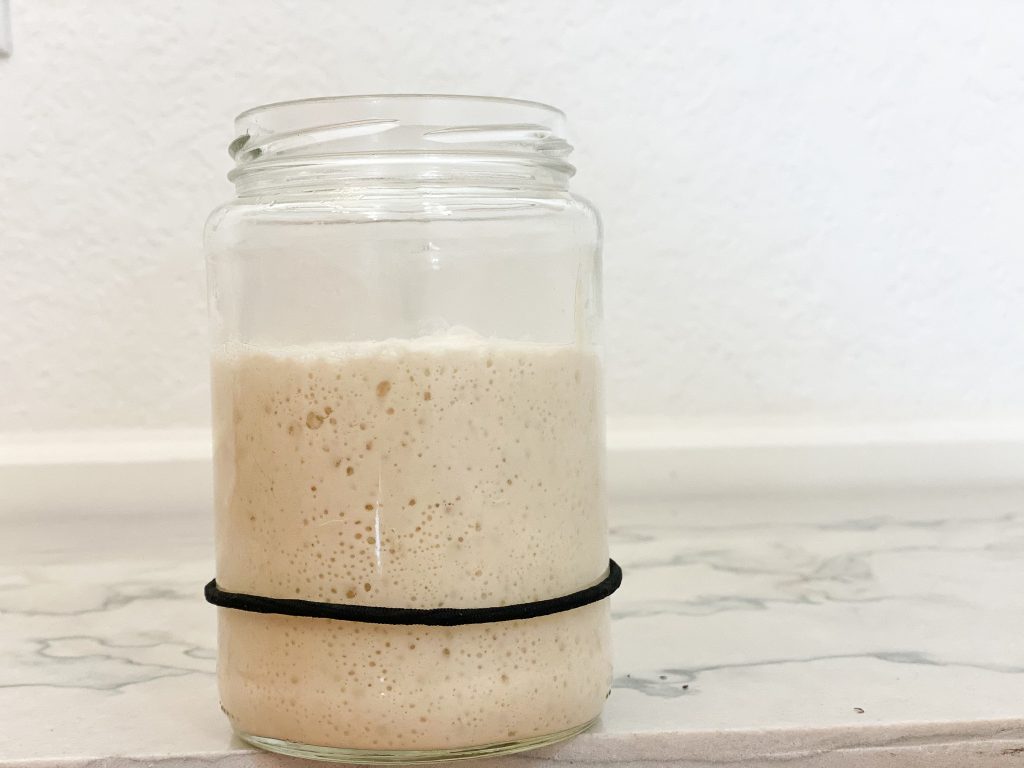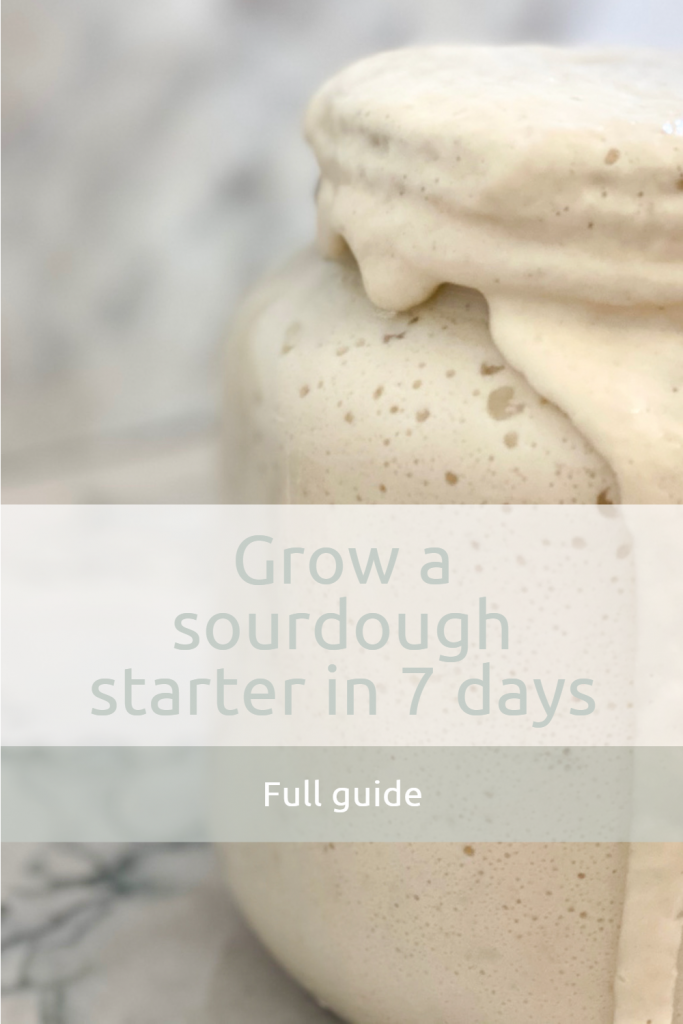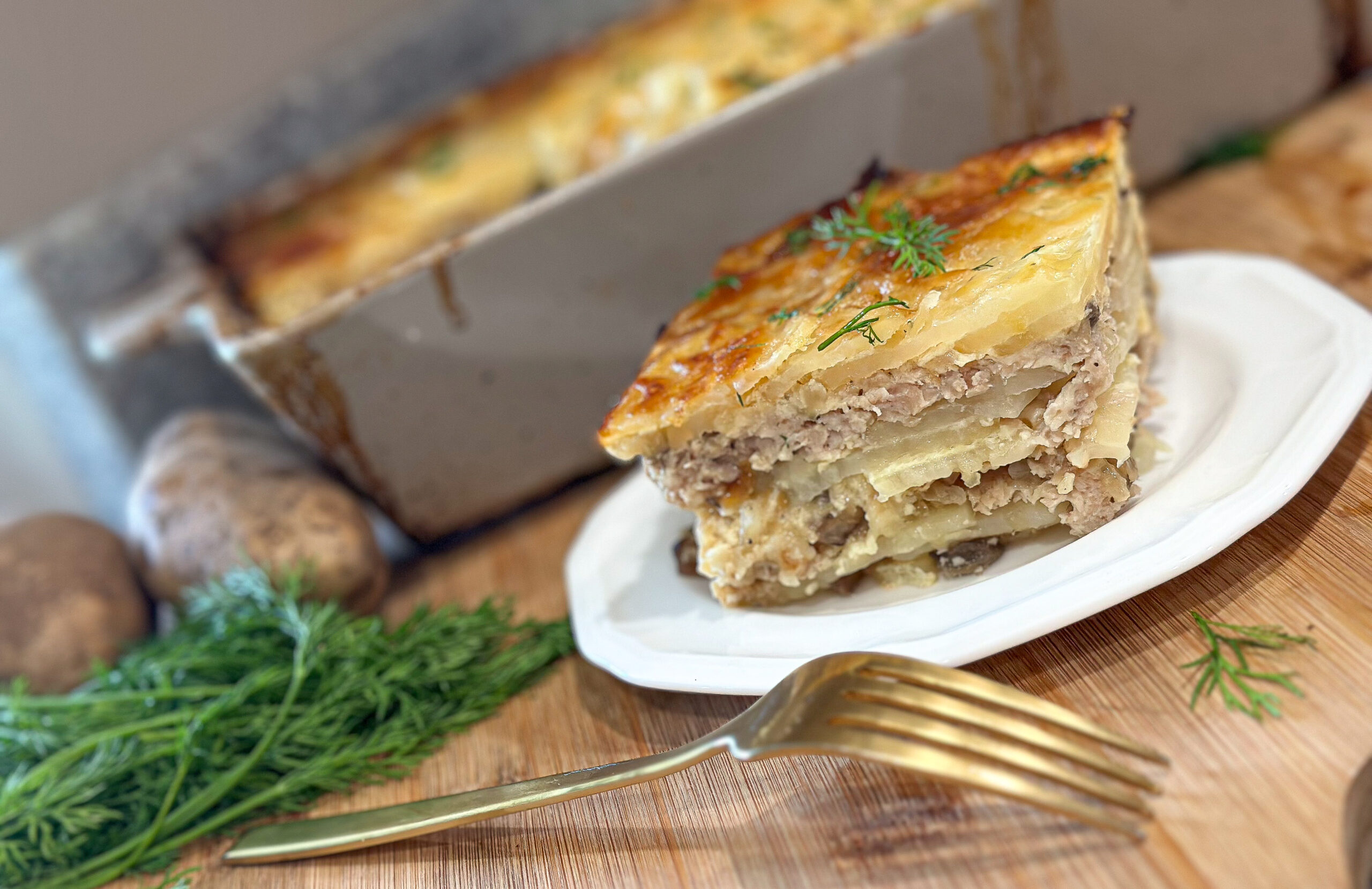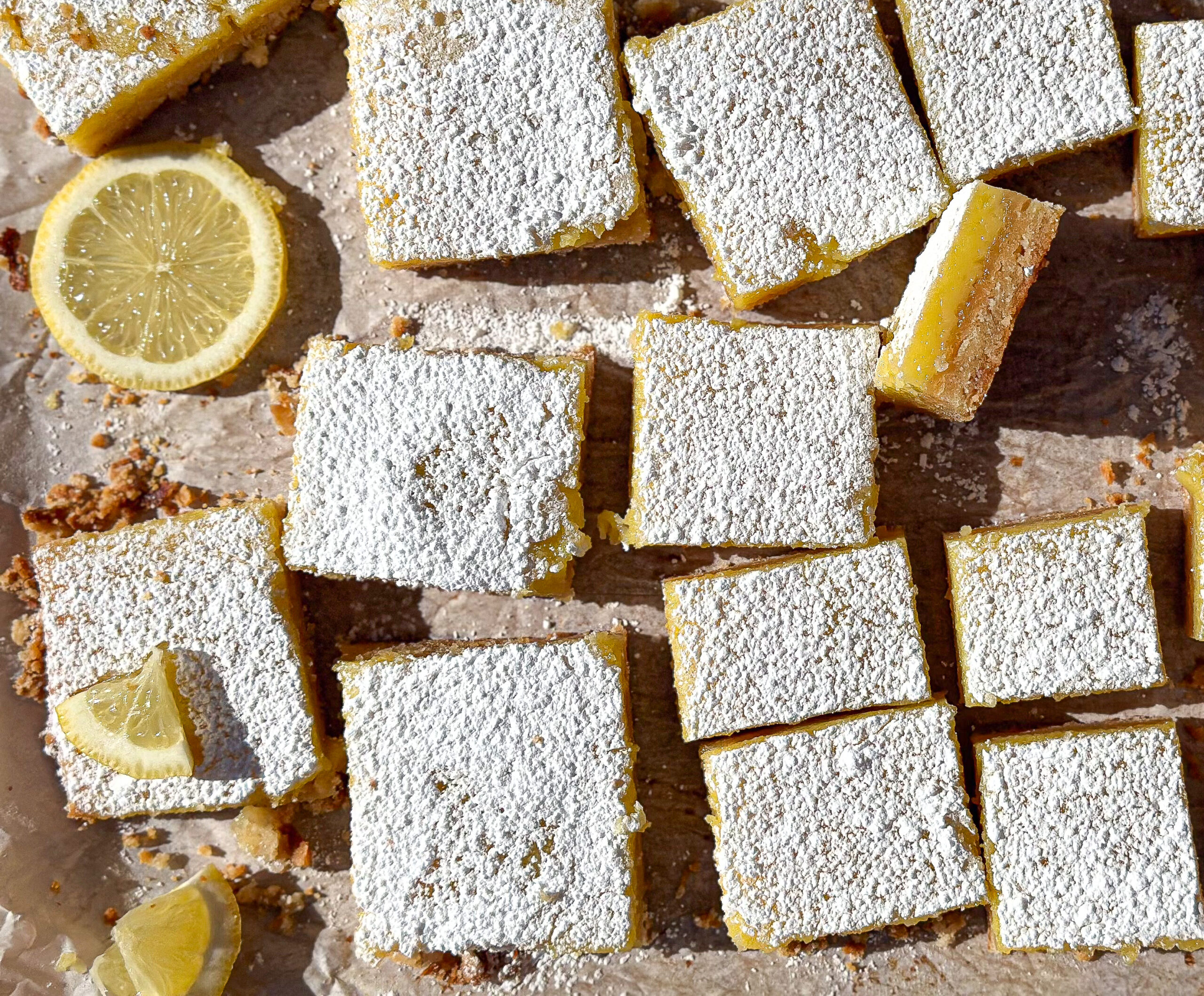Learn how to make Sourdough starter from scratch with just 2 ingredients! All you need is some flour, water, and about one week to start whipping up recipes with your sourdough starter!
Jump to Recipe
Some of you may think, “Oh my goodness, another thing I need to keep alive.” Well….yes, that is true! But it’s not as hard or time-consuming as you might think.
When I have my sourdough starter on hand, I know I can quickly whip up many recipes that use active sourdough or even the discard. It has gotten to a point where I don’t think about it. It is something that has become a part of my day. I can quickly whip up something like pancakes for breakfast or pizza for dinner- using a sourdough starter. Not only does it add a depth of flavor to your food, but also you will be feeding wholesome and nutritious foods to your family!
I am here to tell you sourdough isn’t hard!
If you have a little bit of time and a little bit of patience, you will have the most nutritious food at hand! Once you have an established sourdough starter- you can start baking the best homemade bread you will ever have!

WHAT IS SOURDOUGH?
To better understand what sourdough is, let’s talk about yeast. A sourdough starter is a mixture of flour and water that has cultivated wild yeast and bacteria from the environment. Yeast is a fungus, and it’s all around us. It floats through the air, it’s living in our bodies, and it’s in a lot of the food that we eat. Traditionally, bread is made in two different forms: commercially made yeast or with a sourdough starter. You are most likely familiar with commercially produced yeast, it’s sold dry. It’s cultivated in a lab to specifically work fast to leaven (rise) our bread.
IS SOURDOUGH HEALTHIER THAN YEAST?
Now that we understand what yeast is, let’s dive into what is sourdough? and why is it healthier than yeast? Sourdough starter consists of 3 things. Flour, water, and organisms. Sourdough bread is made by fermentation, it’s naturally leavened bread which means it doesn’t use commercial yeast to rise. Instead, it uses a ‘starter’ – a fermented flour and water mixture that contains wild yeast and good bacteria – to rise.
This produces the tangy flavor and slightly chewy texture you’ll find in sourdough. Wild yeast has more flavor than commercial yeast, Sourdough is natural in the sense that it doesn’t contain any additives, also it helps to break down the anti-nutrients for better absorption.
Ingredients
- Unbleached flour
- Filtered water
Tools you may need
- Wooden spoon
- jar with a loose-fitting lid
- food scale (for accuracy)
- Rubber band
Tip’s
Don’t tighten the lid to tightly, you just want the lid to sit on top to make sure the mixture doesn’t get dry. But you also want air to circulate through it. It’s important for the starter to “breath”
Try to keep your house consistent in temperature, and the warmer the better. Sourdough starter does very well in a warm environment. The cold slows down the fermentation and might make this process to slow down. Be patient, I promise that it will take hold if you trust the process.
My house is set to 72, and my starter does great! If you live in a cold environment. A little trick is to place your jar with your starter into an oven that’s NOT turned on and leave the oven light on. That will make it much warmer in there. (should be around 75-85 degrees)
Pick morning OR night to feed your starter. For example, I feed mine every morning at 8 am.
The process for homemade sourdough starter
The process is very simple so let’s get started!
Day 1
To a clean jar add 50 grams filtered water and 50 grams unbleached organic flour. Mix very well to ensure there is no pockets of dry flour. Loosely place a lid on the jar. Let it sit for 24 hours.
You will need a jar with room for the starter to grow.
Day 2:
Mix the starter in a clean jar, transfer 50g of the sourdough starter, and then add 100g water and 100g flour. Mix very well then loosely close with a lid and let it ferment for 24 hours. This allows the colonies of fungus to grow into the new flour and water you add daily. You will notice a yellow liquid gathering on top, which is normal (it can also form in the bottom of the jar). Just leave it, DO NOT drain it.
For the other 50g grams of starter, you will discard it. You can compost it. But do not put it down your drain, it might clog your pipes.

What is the reason for discarding half the mixture?
Every day if you add 100g of flour and 100g of water, by day 7 your jar will be overflowing with starter. Also- for the starter to get stronger it needs the correct ratio of starter to fresh flour and water. 1:2:2. Sourdough starter feeds on the fresh flour and water you add daily. Basically, you would end up with a lot of extra starter by the end of the process, and none of it mature.
Day 3
Mix the starter, then take out 50g into a clean jar and to it add 100g water and 100g flour. Mix very well then loosely close with a lid and let it ferment for 24 hours.
Discard the rest of the starter. This is called “sourdough discard”
Day 4
Mix the starter, then take out 50g into a clean jar and to it add 100g water and 100g flour. Mix very well then loosely close with a lid. Use a rubber band to mark the level of the starter right after it is fed, to see if the starter is growing. The sourdough starter should start rising up to 20%-35%

Day 5
Do the same process as days 2-4 but feed every 12 hours instead every 24 hours.
For example: feed at 8am, then again at 8pm. The sourdough starter should double in size after a feeding.

Day 6
Feed every 12 hours.
Your sourdough should be getting stable by now, that means it should be doubling if not tripling in size after a feeding.
Day 7
Feed every 12 hours.
By day 7 your sourdough should have plenty of beneficial bacteria present that makes a sourdough bread rise! Your starter should be very active and bubbly. when you look closely you can almost see it “breath”
Your sourdough starter is mature and is ready to bake with. After today, you no longer need to discard half every day. And you can go back to feeding it once a day, or if you keep it in the fridge – you can feed it every 3-7 days.

We did it! we grew our very own sourdough starter from scratch! This was a fun journey. Its so mesmerizing to me that water and flour can make this! Just look how beautiful she is! it took you a week to grow her. This is your baby, don’t forget to feed it. The more often you feed your sourdough starter the stronger it will become. I feed mine once a day.
ACTIVE SOURDOUGH STARTER
Active sourdough is starter that has been fed and allowed to rise in order to use in a sourdough recipe. It is also referred to as “fed sourdough starter” or “leavened”
What is sourdough discard
Discard is the portion of the sourdough starter that is discarded when it is fed or refreshed. This discarded portion of the starter is not active. To avoid food waste, it can be used in Sourdough discard recipe’s instead of being thrown away.
Maintaining your sourdough starter
Once your sourdough is established, there is some maintaining that you will have to do to keep it happy and active. Just as anything in life, if you don’t feed it- it will get weaken and over time may die. Because there are alive bacteria living in your sourdough, it feeds off of the fresh flour and water you give it. The best option is to feed it, then place it in the fridge. The cold slows down the fermentation process.
If you leave your sourdough starter on your counter top, you will have to feed it every day. The present bacteria eat up the flour and water very quickly at room temperature. If you feed it everyday then you have to bake or cook with it every day. if you will not be using your sourdough starter every day, I would recommend keeping it in the the fridge between uses. Otherwise if you keep feeding it and not baking with it, the sourdough starter will accumulate and you will have an abundance of starter.
If you are keeping the sourdough starter in the fridge and not baking with it, Once a week discard half of your starter and then feed it as regular. this helps to refresh the starter.

What is the liquid in my sourdough starter?
This darkish liquid is called Hooch. It looks as if the water separated from the flour. Hooch forms when the starter hasn’t been fed in a while. This is its way of telling you its hungry! It’s speaking to you in its own universal way. It is alive after all! Do not worry, this does not mean it is bad. Just feed it as normal.
What if my sourdough starter is bubbling, but not rising?
If this is happening a few hours after a feeding, the mixture may be too wet or runny. Varying on home humidity and what type of flour you are using may lead to different consistency. Simply just add a few table spoons of flour at a time. Give it a good mix and it will rise in a few hours.
PREPARING FOR A FEEDING
If you kept your starter in the fridge, and you need to feed it again for a recipe. Allow it to come to room temperature before you feed it. Avoiding the cold, will help with a quicker rise.
Timing
Before you need to use your sourdough starter for a recipe, take it out of the fridge at least 5 hours before and feed it. Every sourdough starter will have different rising time. A lot depends on how the starter will rise. The temperature of the house, how much water and flour you feed it. For example my home is set to 65 and it takes my sourdough starter 5-6 hours to rise if the starter just came out of the fridge. If I had kept my starter on the countertop and then I feed it, it will rise in 3-4 hours! Once you bake with it, you can put the sourdough starter back in the fridge. you don’t need to feed again, because you fed it the night before.
You will develop your own feeding and baking schedule with time!
From now on, you will need to feed your sourdough starter regularly! My usual feed looks like this: 50 grams sourdough starter, 100 grams water, 100 grams flour. This will give me 250 grams of active starter. Usually the bread I bake requires 200 grams of leavened starter. That will leave me with 50 grams of starter that I will then feed and continue to grow. If I know that I will want to make sourdough pancakes, or bagels, or sourdough pizza. I will feed my starter with more flour and water than I usually do. I keep my sourdough starter at a ratio of 1:2:2 (50 g starter, 100g water, 100g flour)
If you want to know more about ratios, you can read about it here.
What if I don’t have enough starter to flour and water ratio?
That’s ok! sourdough is very forgiving. There were times I accidentally didn’t make enough sourdough starter and I over used it. And I was left with only 20 grams of starter. All I did was, I mixed the 20g starter with 115g water, 115g flour to get my usual 250g of starter. You can do this once in a while, Actually “starving” your starter once in a while might be beneficial! This process makes the starter stronger. I do this Once a month. What you do not want to do is, use all your starter on a recipe then your left with no starter to grow.
How To Grow Sourdough starter
Equipment
- wooden spoon
- jar with a loose fitting lid
- food scale (for accuracy)
- Rubber band
Ingredients
- 100 grams filtered water
- 100 grams unbleached organic flour
Instructions
- DAY 1To a clean jar add 50 grams filtered water and 50 grams unbleached organic flour. Mix very well to ensure there is no pockets of dry flour. Loosely place a lid on the jar. Let it sit for 24 hours.
- DAY 2Mix the starter, to a clean jar transfer 50g of the sourdough starter, then to it add 100g water and 100g flour. Mix very well then loosely close with a lid and let it ferment for 24 hours. This allows the colonies of fungus to grow into the new flour and water you add daily. You will notice a yellow liquid that gathers on top, that is normal. Just leave it, DO NOT drain it.THE OTHER 50G GRAMS OF STARTER YOU WILL DISCARD IT. YOU CAN COMPOST IT, FEED IT TO YOUR CHICKENS, BUT DO NOT PUT IT DOWN YOUR DRAIN, IT MIGHT CLOG YOUR PIPES.
- DAY 3Mix the starter, then take out 50g into a clean jar and to it add 100g water and 100g flour. Mix very well then loosely close with a lid and let it ferment for 24 hours.Discard the rest of the starter. This is called “sourdough discard"
- DAY 4Mix the starter, then take out 50g into a clean jar and to it add 100g water and 100g flour. Mix very well then loosely close with a lid. Use a rubber band to mark the level of the starter right after it is fed, to see if the starter is growing. The sourdough starter should start rising up to 20%-35%
- DAY 5Do the same process as days 2-4 but feed every 12 hours instead every 24 hours.For example: feed at 8am, then again at 8pm. The sourdough starter should double in size after a feeding.
- DAY 6Feed every 12 hours.Your sourdough should be getting stable by now, that means it should be doubling if not tripling in size after a feeding.
- DAY 7Feed every 12 hours.By day 7 your sourdough should have plenty of beneficial bacteria present that makes a sourdough bread rise! Your starter should be very active and bubbly. when you look closely you can almost see it “breath”Your sourdough starter is mature and is ready to bake with. After today, you no longer need to discard half every day. And you can go back to feeding it once a day, or if you keep it in the fridge – you can feed it every 3-7 days.
Notes
WHAT IS THE REASON TO DISCARD HALF THE MIXTURE?
Every day if you add 100g of flour and 100g of water, by day 7 your jar will be overflowing with starter. Also- for the starter to get stronger it needs the correct ratio of starter to fresh flour and water. 1:2:2. Sourdough starter feeds on the fresh flour and water you add daily. Basically, you would end up with a lot of extra starter by the end of the process, and none of it mature.TIP’S
Don’t tighten the lid to tightly, you just want the lid to sit on top to make sure the mixture doesn’t get dry. But you also want air to circulate through it. It’s important for the starter to “breath” Try to keep your house consistent in temperature, and the warmer the better. Sourdough starter does very well in a warm environment. The cold slows down the fermentation and might make this process to slow down. Be patient, I promise that it will take hold if you trust the process. My house is set to 65, and my starter does great! If you live in a cold environment. A little trick is to place your jar with your starter into an oven that’s NOT turned on, leave the oven light on. that will make it much warmer in there. (should be around 70 degrees) Pick morning OR night to feed your starter. For example I feed mine every morning at 8am,Loved this recipe? leave a comment below and give this post a rating.
As always, thank you for stopping by my farmhouse!









Reader Interactions